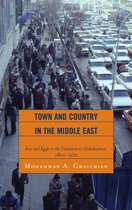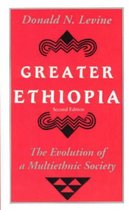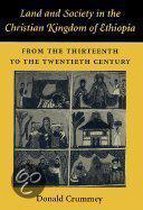Urban Growth in Ethiopia, 1887-1974 From the Foundation of Finfinnee to the Demise of the First Imperial Era
Afbeeldingen
Sla de afbeeldingen over
Artikel vergelijken
Auteur:
Getahun Benti
- Engels
- Hardcover
- 9781498521932
- 20 december 2016
- 232 pagina's
Samenvatting
Combining chronological, thematic, and regional approaches, this book examines political, economic, and social developments that contributed to the rise and growth of towns in Ethiopia from 1887 to 1974. It provides a comprehensive history of the growth of Ethiopian cities during this time with an interdisciplinary approach.
This book highlights the positive achievements that Imperial Ethiopia made in its journey towards urbanization into the modern era, and undertakes a critical assessment of the economic, political, and social impediments that prevented the country from transitioning into a truly fully fledged modern urbanization. It provides a comprehensive history of the growth of towns between 1887 and 1974. It is organized chronologically, regionally, and thematically, divided into three distinct time periods during which Ethiopian towns saw progresses and exposures to limited modern urban features. First, during 1887–1936, the country saw the creation and growth of a national capital (1887) that coordinated the country’s economic and political activities and facilitated the growth of other towns in the empire. It introduced new towns, the railway, modern schools, and health centers. Rudimentary factories were established in Addis Ababa and Dire Dawa, along with motor cars and modern roads, which increased trade between cities. The next era was the Italian occupation from 1936–1941, which shook the pre-existing process of urban growth by introducing a modern European style urbanization system. Ethiopian cities saw a qualitatively different way of urban growth in both form and content. The Italians introduced modern economic and physical planning, administration, and internal organization. People were introduced to modern life in urban areas, exposed to modern wage labor system, and thus moved to towns to take advantage of the opportunity. The Italian occupation left behind many features of modern urbanization, and this influenced population exposed to modern consumptive tastes was determined to retain what the Italians introduced. Finally, the post-Italian period saw a new era of urban growth. Due to economic and organizational problems resulting from destructions caused by the war, the process of urban growth was slowed down in the early 1940s. Although the government did not introduce a clear urban policy in the immediate aftermath of the Second World War, towns continued to grow progressively from the early 1950s to 1974.
This book highlights the positive achievements that Imperial Ethiopia made in its journey towards urbanization into the modern era, and undertakes a critical assessment of the economic, political, and social impediments that prevented the country from transitioning into a truly fully fledged modern urbanization. It provides a comprehensive history of the growth of towns between 1887 and 1974. It is organized chronologically, regionally, and thematically, divided into three distinct time periods during which Ethiopian towns saw progresses and exposures to limited modern urban features. First, during 1887–1936, the country saw the creation and growth of a national capital (1887) that coordinated the country’s economic and political activities and facilitated the growth of other towns in the empire. It introduced new towns, the railway, modern schools, and health centers. Rudimentary factories were established in Addis Ababa and Dire Dawa, along with motor cars and modern roads, which increased trade between cities. The next era was the Italian occupation from 1936–1941, which shook the pre-existing process of urban growth by introducing a modern European style urbanization system. Ethiopian cities saw a qualitatively different way of urban growth in both form and content. The Italians introduced modern economic and physical planning, administration, and internal organization. People were introduced to modern life in urban areas, exposed to modern wage labor system, and thus moved to towns to take advantage of the opportunity. The Italian occupation left behind many features of modern urbanization, and this influenced population exposed to modern consumptive tastes was determined to retain what the Italians introduced. Finally, the post-Italian period saw a new era of urban growth. Due to economic and organizational problems resulting from destructions caused by the war, the process of urban growth was slowed down in the early 1940s. Although the government did not introduce a clear urban policy in the immediate aftermath of the Second World War, towns continued to grow progressively from the early 1950s to 1974.
Productspecificaties
Wij vonden geen specificaties voor jouw zoekopdracht '{SEARCH}'.
Inhoud
- Taal
- en
- Bindwijze
- Hardcover
- Oorspronkelijke releasedatum
- 20 december 2016
- Aantal pagina's
- 232
- Illustraties
- Nee
Betrokkenen
- Hoofdauteur
- Getahun Benti
- Hoofduitgeverij
- Lexington Books
Overige kenmerken
- Extra groot lettertype
- Nee
- Product breedte
- 159 mm
- Product hoogte
- 19 mm
- Product lengte
- 241 mm
- Studieboek
- Nee
- Verpakking breedte
- 159 mm
- Verpakking hoogte
- 21 mm
- Verpakking lengte
- 237 mm
- Verpakkingsgewicht
- 476 g
EAN
- EAN
- 9781498521932
Je vindt dit artikel in
- Categorieën
- Taal
- Engels
- Beschikbaarheid
- Leverbaar
- Periode
- ca. 1800-1910
- Boek, ebook of luisterboek?
- Boek
Kies gewenste uitvoering
Kies je bindwijze
(2)
Prijsinformatie en bestellen
De prijs van dit product is 90 euro en 99 cent.
3 - 4 weken
Verkoop door bol
- Prijs inclusief verzendkosten, verstuurd door bol
- Ophalen bij een bol afhaalpunt mogelijk
- 30 dagen bedenktijd en gratis retourneren
- Dag en nacht klantenservice
Rapporteer dit artikel
Je wilt melding doen van illegale inhoud over dit artikel:
- Ik wil melding doen als klant
- Ik wil melding doen als autoriteit of trusted flagger
- Ik wil melding doen als partner
- Ik wil melding doen als merkhouder
Geen klant, autoriteit, trusted flagger, merkhouder of partner? Gebruik dan onderstaande link om melding te doen.








